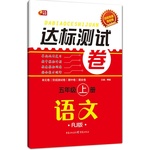题目内容
William Butler Yeats, a most famous Irish writer, was born in Dublin on June 13, 1865. His childhood lacked the harmony that was typical of a happy family. Later, Yeats shocked his family by saying that he remembered "little of childhood but its pain". In fact, he inherited (继承) excellent taste in art from his family — both his father and his brother were painters. But he finally settled on literature, particularly drama and poetry.
Yeats had strong faith in the coming of new artistic movements. He set himself the fresh task in founding an Irish national theatre in the late 1890s. His early theatrical experiments, however, were not received favorably at the beginning. He didn't lose heart, and finally enjoyed success in his poetical drama.
Compared with his dramatic works, Yeats's poems attract much admiring notice. The subject matter includes love, nature, history, time and aging. Though Yeats generally relied on very traditional forms, he brought modern sensibility to them. As his literary life progressed, his poetry grew finer and richer, which led him to worldwide recognition.
He had not enjoyed a major public life since winning the Nobel Prize in 1923. Yet, he continued writing almost to the end of his life. Had Yeats stopped writing at age 40, he would probably now be valued as a minor poet, for there is no other example in literary history of a poet who produces his greatest works between the ages of 50 and 75. After Yeats's Death in 1939, W. H. Auden wrote, among others, the following lines:
Earth, receive an honoured guest:
William Yeats is laid to rest.
Let the Irish vessel (船) lie
Emptied of its poetry.
【小题1】Which of the following can describe Yeats's family?
| A.It filled Yeats's childhood with laughter. |
| B.It was shocked by Yeats's choice. |
| C.It was a typically wealthy family. |
| D.It had an artistic atmosphere. |
| A.Yeats founded the first Irish theater. |
| B.Yeats stuck to modern forms in his poetry. |
| C.Yeats began to produce his best works from the 1910s. |
| D.Yeats was not favored by the public until the 1923 Noble Prize. |
| A.Envy | B.Sympathy | C.Emptiness | D.Admiration |
| A.Yeats's literary achievements | B.Yeats's historical influence |
| C.Yeats's artistic ambition | D.Yeats's national honor |
【小题1】D
【小题2】C
【小题3】D
【小题4】A
解析试题分析:本文讲述是诺贝尔奖获得者爱尔兰著名的艺术家Yeats的一生的故事。
【小题1】D 细节题。根据第一段最后三行. In fact, he inherited (继承) excellent taste in art from his family — both his father and his brother were painters. But he finally settled on literature, particularly drama and poetry. 可知他的家庭是一个很有艺术气息的家庭,故D正确。
【小题2】C 计算题。根据Had Yeats stopped writing at age 40, he would probably now be valued as a minor poet, for there is no other example in literary history of a poet who produces his greatest works between the ages of 50 and 75.和William Butler Yeats, a most famous Irish writer, was born in Dublin on June 13, 1865.可知他是1865年出生的,在50岁以后才写出最好的作品,那么大约是在20世纪10年代,故C正确。
【小题3】D 推理题。根据After Yeats's Death in 1939, W. H. Auden wrote, among others, the following lines:
Earth, receive an honoured guest:
William Yeats is laid to rest.
Let the Irish vessel (船) lie
Emptied of its poetry.
说明他认为Yeats是爱尔兰艺术届的巨大损失。说明他很钦佩Yeats,故D正确。
【小题4】A 主旨大意题。根据文章第一段和最后一段可知本文主要讲的是爱尔兰著名的艺术家Yeats的一生的故事,故A正确。
考点:考查认为传记类短文阅读
点评:本文讲述是诺贝尔奖获得者爱尔兰著名的艺术家Yeats的一生的故事。文章基本上是考查细节,对此类题型考生可以首先从问题中找到关键词,然后以此为线索,运用略读及查阅的技巧在文中迅速寻找这一细节,找到后再把这一部分内容仔细阅读一遍,仔细比较所给选项与文中细节的细微区别,在准确理解细节的前提下,最后确定最佳答案。

 星级口算天天练系列答案
星级口算天天练系列答案 芒果教辅达标测试卷系列答案
芒果教辅达标测试卷系列答案写作(满分25分)
请从下列任务中选择你 最喜欢的一位,用英语写一篇120词左右的短文。要求很具所给信息做适当发挥,且需包括以下三部分内容:
1. 对该任务的简单介绍;
2. 喜欢该任务的理由;
3. 从该任务身上得到的启示。
|
|
|
|
| Thomas Edison | Helen Keller | William Shakespeare |
| inventor; creative; diligent; full of wisdom | ordinary but great woman; disabled; optimistic; eager to learn | writer; talented; imaginative; man of all ages |
| “Genius is one percent Inspiration and ninety-nine Percent perspiration.” | “… if I had the power of sight for three days.” | “life is a stage…” |


